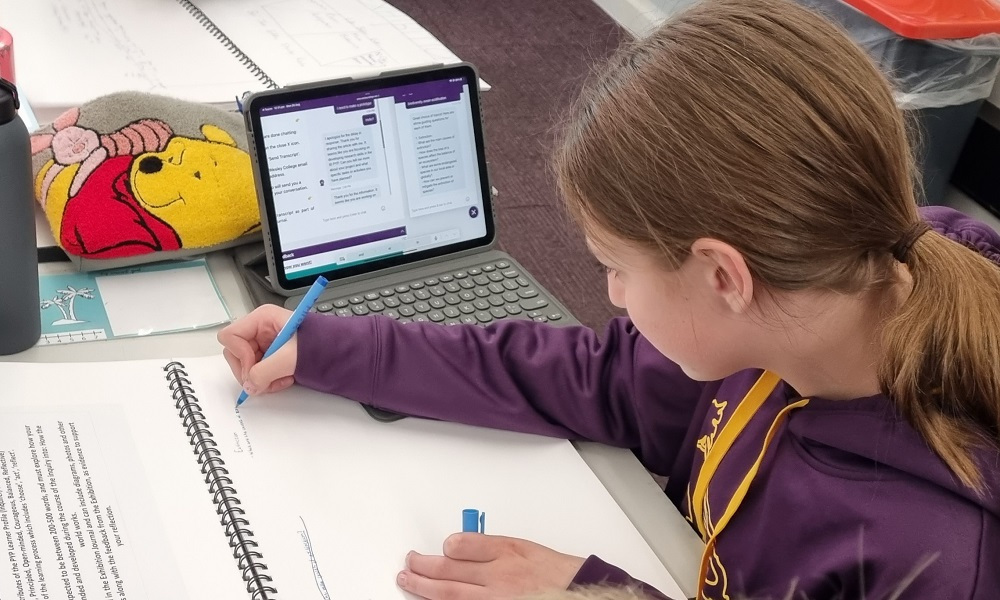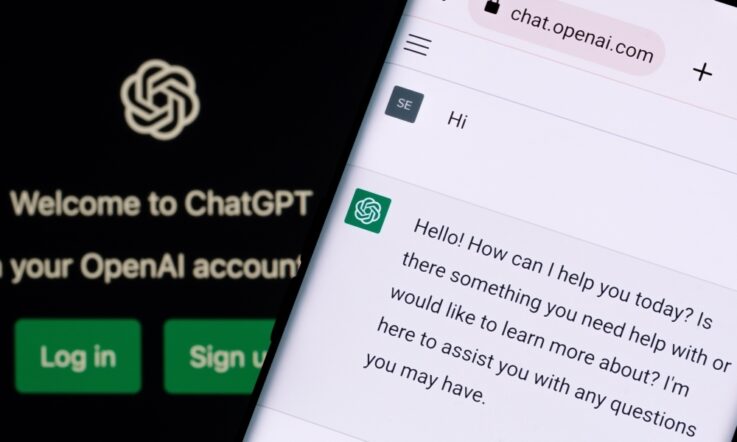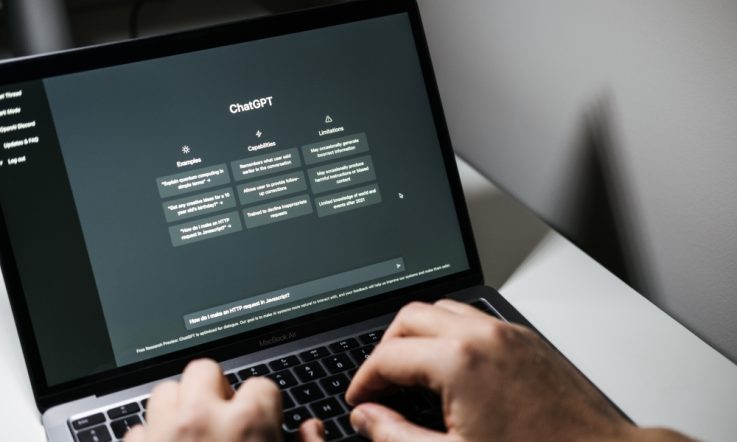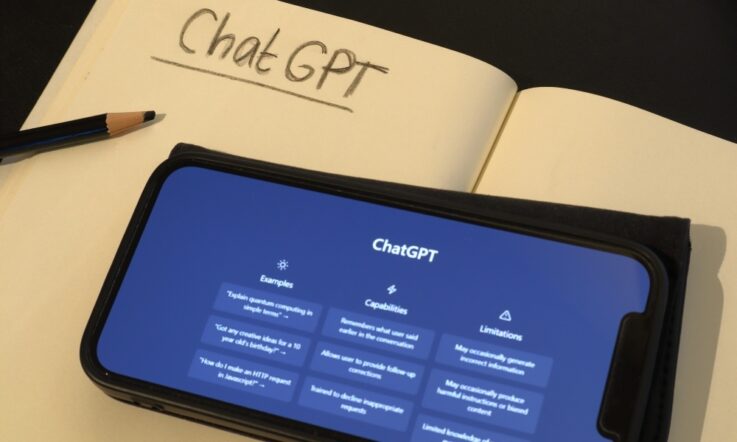Since ChatGPT by OpenAI launched in November 2022, there has been much talk about the impact that it (and other similar artificial intelligence platforms) has on teaching, learning and educational assessment.
While some schools are shying away from using artificial intelligence (AI) altogether, Wesley College in Melbourne is embracing it in a significant way. This year, they introduced an AI learning coach called Wesmigo, powered by ChatGPT.
The college explains that Wesmigo is a pre-engineered chatbot tool which has been specifically designed for use in schools, with age-appropriate prompts aimed at developing students’ skills and confidence using AI tools to achieve specific learning tasks.
Cameron Paterson, Director of Learning tells Teacher, while the college is certainly aware of the wider concerns voiced about the use of AI in schools, it wanted to embrace the opportunities that AI presents. ‘We've had a bit of a reputation for being early on things and that's the way we wanted to think in relation to artificial intelligence… We wanted to express to both our students and particularly our teaching staff that we saw this as an incredible opportunity.’
After attending a talk by Sam Altman, the former CEO of OpenAI, earlier this year, Paterson was encouraged to think of AI as a personal coach for every teacher, and a personal tutor for every student. Upon returning to work, Paterson posed a challenge to the school’s Head of Digital Learning and Practice, David Howard and his team.
‘I said, “look, here's a challenge for you. What would it look like if we used AI to develop something, somehow, so that every student in the school had some sort of a personal tutor?”
‘To be honest, I had no idea that David and his team would so successfully manage to run with it and prototype it within about 4 weeks and come back to me and say, “well, here it is”. I hadn't quite expected that,’ Paterson laughs.
Developing the custom platform
Howard says that they saw the benefit of using AI as a coach or a questioning tool to help a student or staff member when they were stuck for an idea and didn’t know how to move forward. ‘We looked at some work around prompts and prompt engineering that would ask questions, and teachers would benefit from that.
‘But we had also child safety concerns,’ he adds. ‘We didn't want students to be going directly to ChatGPT, even though we knew they were. We didn't want them to have to sign up to ChatGPT and be just off on their own.’
Instead, they wanted to harness the power of ChatGPT and also do retrieval augmentation generation, which Howard explains is where you act as a sort of middleman between the user and ChatGPT itself.
‘You can augment the responses that come back from ChatGPT to be age appropriate, be child safe, have the contextual awareness of an IB (international baccalaureate) school, have the contextual awareness of the school itself, know a bit more about the curriculum – and therefore give a more custom, secure service to the students,’ Howard says.
Wesmigo doesn’t produce copy for the user, it doesn’t produce content or make the ‘product’. Instead, it acts as a brainstorming, questioning and provocation tool for students.
‘What I really like about this is the ability to push the students in terms of generative, more constructive type questions to push their thinking more deeply, to make them think beyond the first obvious answer. And it's incredible that a tool like AI is able to do this because it's something that teachers sometimes have a lot of difficulty with, and the students are certainly recognising that,’ Paterson says.
Wesmigo is housed within the school’s Learning Management System (LMS), so only Wesley students are able to use the service. The Digital Learning team have developed a companion User Guide to support student analysis of Wesmigo’s output and to build their understanding of the limitations of generative AI.
‘In the LMS page where the chatbot sits, we can have other scaffolding information around it. So upfront we say “it is AI, so what do you need to factcheck yourself as the human in the loop? What are the things you’re going to look for?” We say to the students, “be a detective, be an investigator. If you think there's something that's not quite right in the response, use your human instinct to actually do the investigation yourself,”’ Howard says.
Wesmigo in teaching and learning
Teachers are trained to model the use of Wesmigo to students, building their AI skills and capabilities in the process. The school’s motto is ‘Dare to be wise’ and Paterson says this encourages a culture of curiosity and creativity amongst staff.
‘People are open to this and ready to embrace it, which is a helpful stance for us to have to begin with,’ he says. ‘But then, of course, we also have teachers that are a little bit nervous about using AI themselves or using it with their students and in their classroom. I think that's the reality of where we are at the moment right around the globe in relation to artificial intelligence and that's a good thing,’ he says. ‘We have continually pushed the line that none of this is compulsory, but we encourage people to play, and I think using the term “play” and “playful” is helpful here.’
The students are seeing the potential benefits of using Wesmigo too. This year, year 6s have been using it to help identify and refine a research question for their IB Primary Years Program Exhibition (PYPX) – a self-directed and issues-focused project that encourages students to engage deeply in research. Wesmigo asked students a series of questions that encouraged them to think deeply and follow different lines of inquiry.
‘These are questions that typically a teacher might have asked small groups in relation to their PYP exhibition. But instead of the teacher going around to individual groups, we’re just having a machine ask the same similar sorts of questions and push that student thinking more deeply,’ Paterson explains.
Year 6 student Clara, says, ‘It gave you a straightforward answer, but not too straightforward – it made you think.’
More learning opportunities
Following positive feedback from year 6 IB PYP teachers and students, the Digital Learning team is now looking to scale Wesmigo for student and staff learning opportunities at other year levels across the college.
Despite this, Paterson says that they view Wesmigo very much as a pilot at the moment.
‘It's a chance for us to play and a chance for our students to play. It's not something that we're wedded to for the next decade. I would think in 5 years we'll be doing things very differently. I don't know in 5 years that we will need to be teaching prompt engineering, I think the AI will have shifted to an extent that we don't need to put in the strict guidelines and instructions that we're currently giving it.’
Paterson says that while he expects that changes to AI will be significant in years to come, he doesn’t believe that it will replace the teaching profession altogether.
‘I’m not convinced that artificial intelligence will replace the teaching profession. I think as a profession, if we learn how to use it and incorporate it and develop the facilitative skills to use it really constructively and generatively in terms of being able to push the thinking more deeply, that's the best outcome we can hope for.’
In this article David Howard explains how students are encouraged to factcheck the information that the artificial intelligence provides. How do you ensure that students are using their human instinct to investigate information further? Are they acting as a detective or an investigator? How are they supported to do this work?
How do you see AI improving the way you approach your work as a teacher? Do you see the potential for it to save you administrative time?



